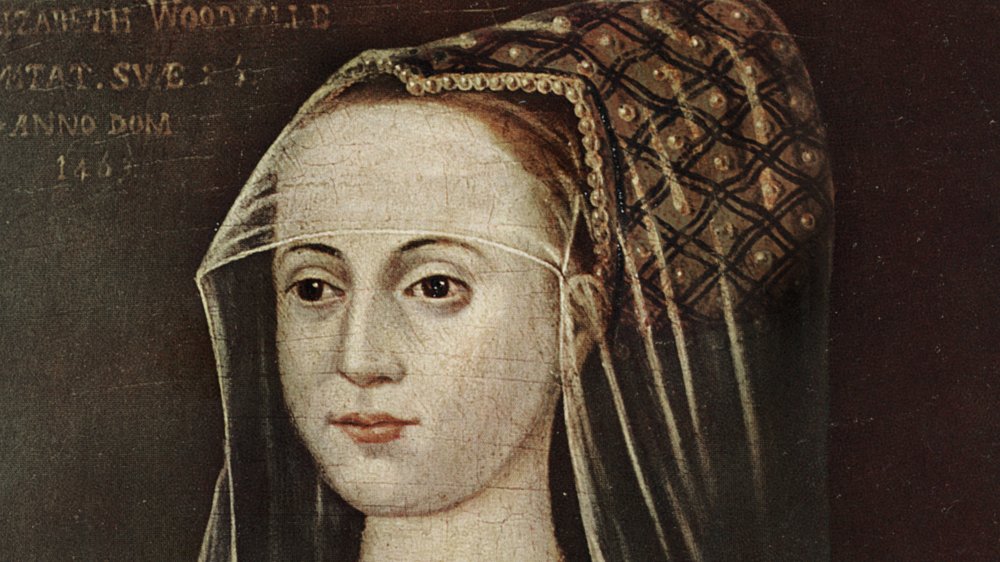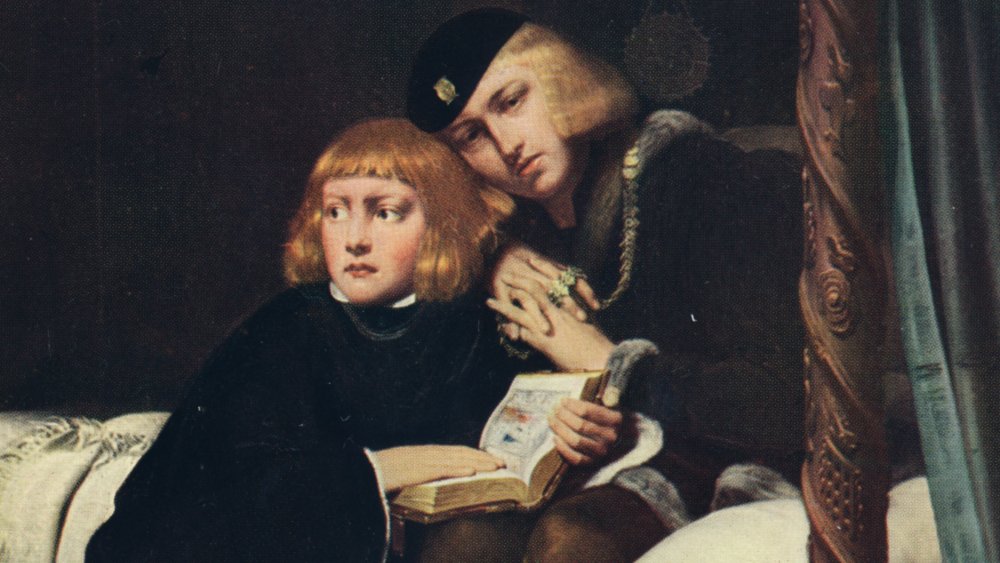The Real Reason Elizabeth Woodville Was Called The White Queen
Historical figures become known by their nicknames. There's the Black Prince, Catherine the Great, and Vlad the Impaler, among others. Over time, people forget why they were given those names in the first place. That's pretty much what happened to Elizabeth Woodville, the White Queen, especially after the BBC TV show of the same name premiered.
Elizabeth Woodville, the wife, or consort, of Edward IV, was a divisive figure in her time. Her marriage to Edward was controversial, per Encyclopedia Britannica. First, she was not of noble birth. Second, she had ties to the Lancasters, the rivals of her husband's House of York. Being a Lancaster, Woodville should have been represented by a red rose, the traditional symbol of her family. But she married a York and was thereby tied to the white rose of York.
Novelist Philippa Gregory ran with this symbolism for her historical novel series The Cousins' War, which portrays the Wars of the Roses — the fight between the Lancasters and Yorks over the English throne — through the eyes of women central to the story. The first novel, The White Queen, centers around Woodville, per History Extra, and became the inspiration for the BBC miniseries.
Woodville was not just a controversial commoner wife of a king. Her life after Edward IV's death brought her sorrow and intrigue — the kind that makes for great television.
She had to surrender her children
Edward IV, who had a difficult family history, to say the least, died in 1483, according to the British Royal Family website. This meant his son by Elizabeth Woodville, Edward V, became king. But his uncle Richard, brother of Edward IV, soon took control of the throne and declared his nephews Edward V and Richard, Duke of York illegitimate.
Unfortunately for Elizabeth, her children were taken away to the Royal apartments at the Tower of London, from which they mysteriously disappeared, never to be seen again. Their disappearance and presumed murder at the hands of Richard III would lead to their own historical nickname — "The Princes in the Tower" — as they're thought to continue to haunt the famed tourist attraction.
Eventually, Woodville was able to secure her daughter Elizabeth of York's marriage to Henry VII uniting both Yorks and Lancasters under the Tudor family and ending the Wars of the Roses. Henry VII fathered Henry VIII who eventually sired Elizabeth I, also a White Queen, but for a different reason. Woodville spent her last years in a convent, possibly to avoid fallout from treasonous actions, per Britannica. Recently discovered letters in the National Archives found Woodville probably died of the Black Plague in 1492, reports The Guardian.
Woodville was one of the most powerful women of her time. Her role in the infamous Wars of the Roses led to the tragic loss of her sons, but it did at least give her a kick-ass historical moniker: the White Queen.

